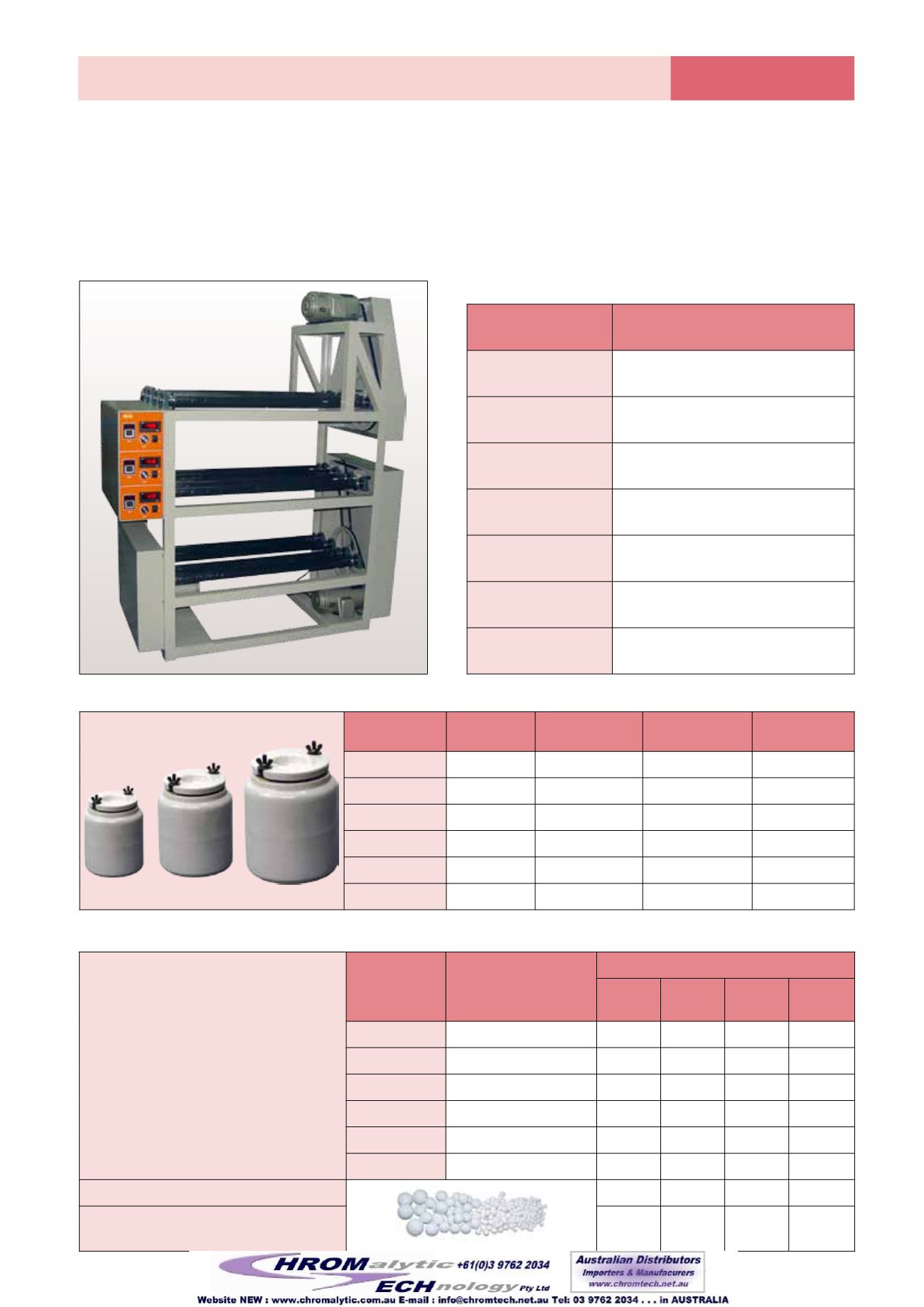
487
M
MILLS
Model
RJM-304
Speed (RPM)
0~420
Pot size (cm)/DIM
Ø
9~
Ø
24
Roller
Ψ
(cm)
Ø
5
Motor
400W
Timer (hrs)
0.1~99.9
Outline size (cm)
W142xD68xH182
Power
AC220V, 50/60Hz
RJM-304, Large Ball Mill, 3 Stages
RJM-304
Size
(mm)
Total Cap.
Useful Cap.
Speed
rpm
Model
Ø
120x150
800
500
130
Mill pot 4
Ø
150x180
1,600
1,000
110
Mill pot 5
Ø
180x210
2,800
2,000
90
Mill pot 6
Ø
210x240
4,500
3,000
85
Mill pot 7
Ø
240x300
7,500
5,000
75
Mill pot 8
Ø
300x360
15,500
10,000
60
Mill pot 10
Balls for Mill Pot
Recommendations
for ball fillings
Mill pot no.
Capacity
approx. ml.
Ball
Ø
42K-9
9mm
42K-15
15mm
42K-20
20mm
42K-30
30mm
4
500
0.05kg 0.1kg 0.1kg
5
1000
0.1kg 0.2kg 0.2kg
6
2000
0.2kg 0.4kg 0.4kg
7
3000
0.3kg 0.6kg 0.6kg
8
5000
0.5kg 1.0kg 1.0kg
10
10000
0.5kg 1.5kg 1.5kg 1.5kg
No. of balls per kg approx.
425 pcs.
130 pcs.
90 pcs.
16 pcs.
Bulk density of balls per Liter approx.
1885g 1930g 2000g 1800g
Mill Pots
Roll Jar Mills, Mill Pots, Balls
●
High efficiency –
Due to the relatively slow rotational speed but large mass of media, more of the energy goes into
milling and less wasted as heat.
●
Narrow particle distribution –
Solids milled in tumble mills are normally so fine and consistent in size that it’s rare to
require classification.
●
Repeatable results –
Mill operating parameters including rotational speed, media size and milling duration can be
independently controlled with known effect on the final results.
●
Low temperature –
Because of the high efficiency of milling and low heat generation, the solids will not be exposed
to high temperatures. For extremely heat sensitive products, cooling jackets can be provided on the mill cylinder.
●
Chemical containment –
Solids are sealed and contained inside the mill, protecting the environment and operators.


